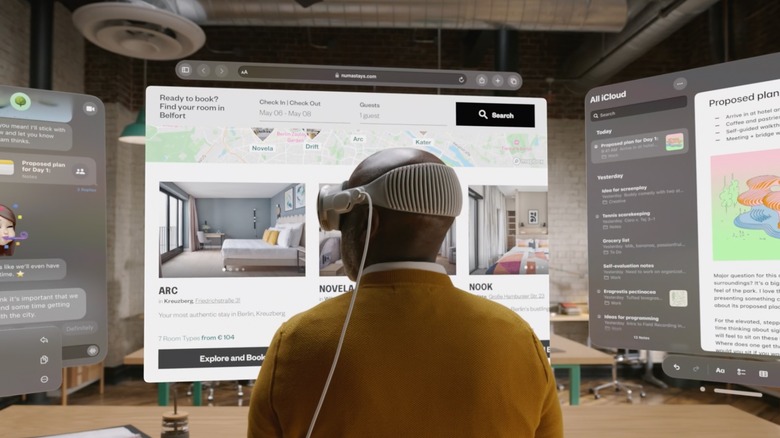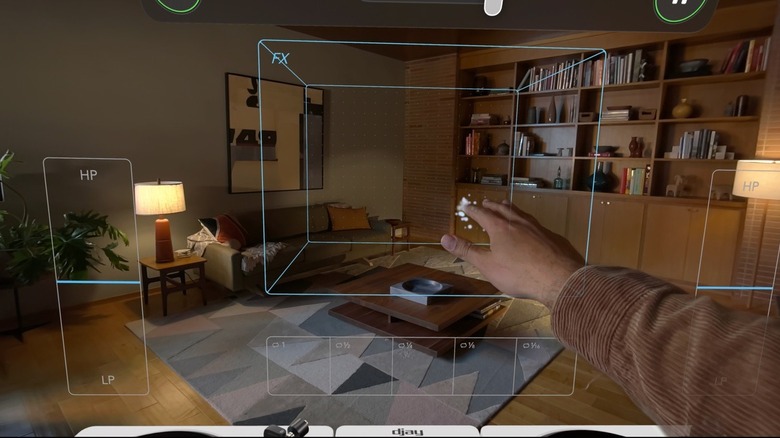Apple visionOS Wants To Do For AR What iOS Did For Smartphones
Building an augmented reality platform isn't easy. Huge companies like Google and Samsung have been working on it for years, while Meta shifted the main focus of its company toward the concept and has been crumbling ever since. But what about Apple?
The Silicon Valley giant recently announced its first AR headset, the Vision Pro, and it hopes the device will revolutionize the way people work, socialize, and entertain themselves. The company has plenty of previous experience in this department, stretching back to the early days of personal computing when the Macintosh was attempting to field a more user-centered PC experience. Since then, the iPod revolutionized the way we listen to music, the iPhone changed the smartphone game, and the iPad remains far more user-friendly than anything on the Android platform. There's no guarantee that Apple will make XR a success, especially considering the new headset's laughably high price point. But if there's a single company that can make the concept successful, it's probably Apple. As with most devices, a strong user interface will be critical to the Vision Pro's success, and Apple has a lot of faith in the new OS it has designed "from the ground up."
The upcoming headset will run visionOS, a powerful new operating system designed to tie everything together and provide users with a comfortable, easy-to-navigate experience. It's the first operating system that has been designed specifically to handle spatial computing, and it boasts a number of capabilities, including dynamic foveated rendering (the Quest 2 has fixed foveation, for reference), as well as the RealityKit 3D engine that brings the many magical real-time effects and capabilities to the headset. While the new OS is certainly looking toward the future of work, interactions, and entertainment — it's also building on foundations Apple has been laying for a long time.
VisionOS borrows a bit from iOS and other platforms
During WWDC 2023, Apple said that visionOS has been built on the foundation set by its previous operating systems, including macOS, iPadOS, and iOS. In addition to giving the operating system a strong base, this should also help users hit the ground running when they're using the Vision Pro. While the device is uncharted territory for Apple, the overlap between operating systems is likely to provide a level of familiarity and flatten out any potential learning curve.
While visionOS will have its own App Store, that store will be packed with compatible apps that are already available on iPadOS and iOS. Apple claims that hundreds of these apps will be ready to download when the product launches early next year. Gaming is also a possibility thanks in part to Apple's partnership with Unity. The engine gets "full access to visionOS features including native gestures," according to Apple, which should allow for a great degree of compatibility. As with everything surrounding the new headset, we still only have limited information about visionOS, its capabilities, and its full range of features. We expect lots more information to come out as we approach the headset's 2024 launch date.

